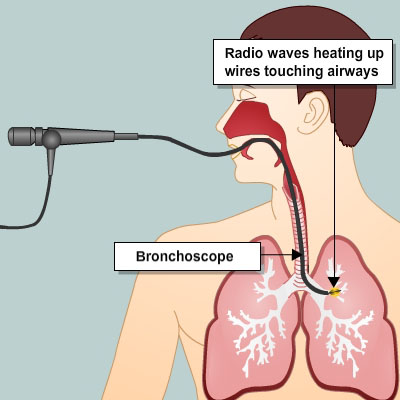
Bronchial thermoplasty
Bronchial thermoplasty involves applying heat or thermal energy to the airway wall which reduces the amount of smooth muscle. Having less smooth muscle limits narrowing of the airway, improving breathing and reducing asthma attacks. Bronchial thermoplasty is only available in specialist centres in the UK with a referral to a specialist consultant.
Bronchial thermoplasty has been shown to reduce:
- Asthma attacks for at least 5 years.
- Visits to Accident & Emergency with asthma.
- Admissions to hospital with asthma.
- Days off work and other activities.
- Use of reliever inhaler.
This results in improvement in asthma-related quality of life.
What does Bronchial thermoplasty involve?
A long, flexible tube called a bronchoscope is passed through the nose or mouth and into the lungs until it reaches the airways. A special fine wire is passed down the bronchoscope and radio waves are used to heat up the wires which touch the airways. The airway lining is heated to about 65°C causing some of the smooth muscle surrounding the airways to break up.
The procedure is usually carried out under sedation or a general anaesthetic. It is done in three separate out-patient sessions, each focussing on a different part of the lung. There will be at least three weeks between each treatment and previously treated airways are assessed by a bronchoscope before the treatment is continued. It is not painful but people generally feel worse for a day or two after treatment.





